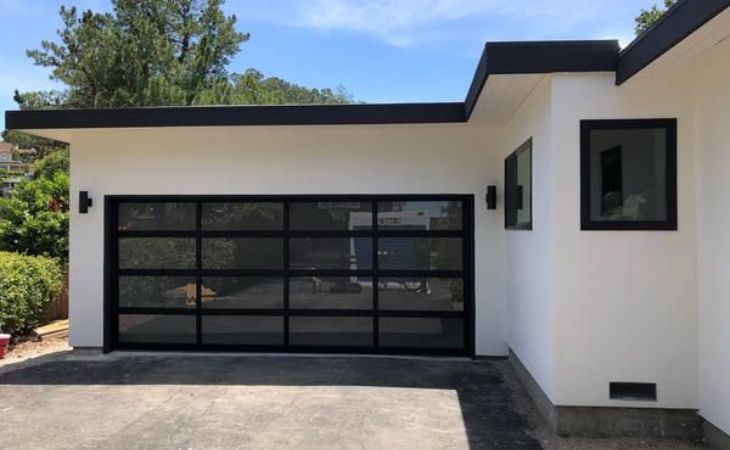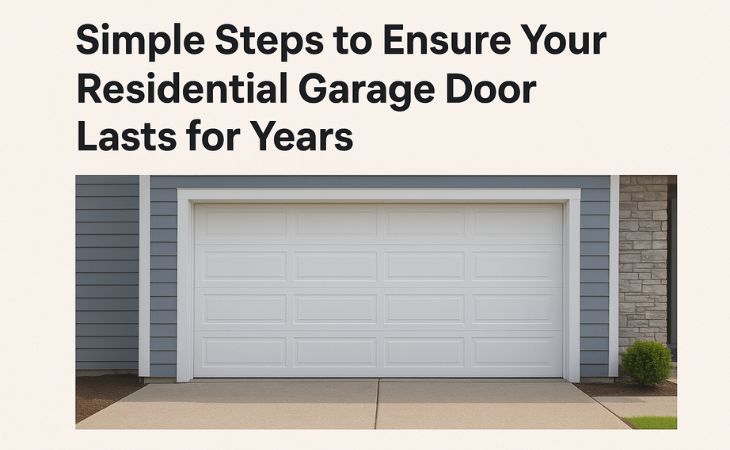A garage door is more than just an entryway to your home; it’s a vital component that offers convenience, safety, and curb appeal. But like any other part of your home, your residential garage door needs maintenance to function efficiently year after year. Whether your garage door is brand new or has been serving your family for a decade, a few simple habits can significantly extend its lifespan.
In this guide, we’ll walk you through simple steps to ensure your residential garage door lasts for years, helping you save money and avoid unexpected repairs.
1. Inspect and Maintain Regularly
Routine inspection is the cornerstone of garage door longevity. Check your door every few months for visible signs of wear, such as frayed cables, rusted springs, or dents in the panels.
Operate the door a few times and listen for unusual noises like squeaking or grinding. These could indicate problems with the rollers or the opener system. Addressing minor issues early prevents major breakdowns later.
Tip (2025 update): In humid areas like Queens, NY, moisture can accelerate rust formation. Wiping metal parts with a dry cloth every few weeks helps maintain their condition.
2. Keep All Moving Parts Lubricated
Lubrication reduces friction between. A well-lubricated garage door operates smoothly and silently. Use a silicone-based or lithium-based lubricant for rollers, hinges, and springs at least two to three times a year. Avoid using grease or WD-40, as these can attract dirt and dust buildup.
3. Tighten Loose Hardware
Since the average garage door opens and closes more than 1,500 times per year, vibration can loosen nuts and bolts over time. Using a wrench, check and tighten all roller brackets and bolts attached to the rails.
If your garage door shakes or makes rattling sounds, it’s often a sign of loose hardware. This quick maintenance step can significantly extend your door’s life and enhance its safety.
4. Clean and Repaint the Surface
Keeping your garage door clean not only improves your home’s curb appeal but also protects the door from corrosion and weather damage. Wash it with mild soap and water every few months to remove dirt, grime, and salt residues, especially during winter.
If your door is made of steel or wood, repainting it every 3–5 years helps prevent rust or warping. Always use weather-resistant paint and a UV-protective topcoat to preserve color and finish.
5. Test the Balance and Auto-Reverse System
An unbalanced garage door puts stress on the opener and can lead to premature failure. To test the balance, disconnect the opener and manually lift the door halfway. If it doesn’t stay in place, the springs may be worn out.
Additionally, check your auto-reverse safety feature, a crucial function required in all modern garage door systems since the early 2000s. Place an object like a block of wood under the door. If the door doesn’t reverse immediately upon contact, call a professional technician from Queens NY Garage Door Repair for servicing.
6. Replace Weatherstripping and Seals
Weatherstripping around your garage door keeps out dirt, rain, and cold air. Over the years, rubber seals have become brittle or cracked. Replace them every 2–3 years to maintain proper insulation and prevent water damage.
This simple fix also helps regulate temperature inside your garage, which is especially valuable during New York’s freezing winters or humid summers.
7. Schedule Professional Maintenance
Even with diligent DIY care, your garage door needs professional maintenance at least once a year. Certified technicians can inspect tension springs, opener alignment, and safety sensors tasks that are risky to handle without experience.
Experts from Queens NY Garage Door Repair use advanced diagnostic tools to catch problems early, ensuring your garage door remains reliable for many years to come.

8. Upgrade When Necessary
Technology evolves quickly, and so do garage door systems. If your opener is more than 10–15 years old, upgrading to a smart garage door opener can enhance both security and efficiency.
Modern systems include features like smartphone control, motion detection lighting, and battery backups all designed to improve convenience and safety in 2025 and beyond.
Conclusion
Your residential garage door is built to last, but only if you take care of it. By performing regular inspections, keeping components clean and lubricated, and scheduling yearly professional checkups, you can easily extend its lifespan by 10–20 years.













































